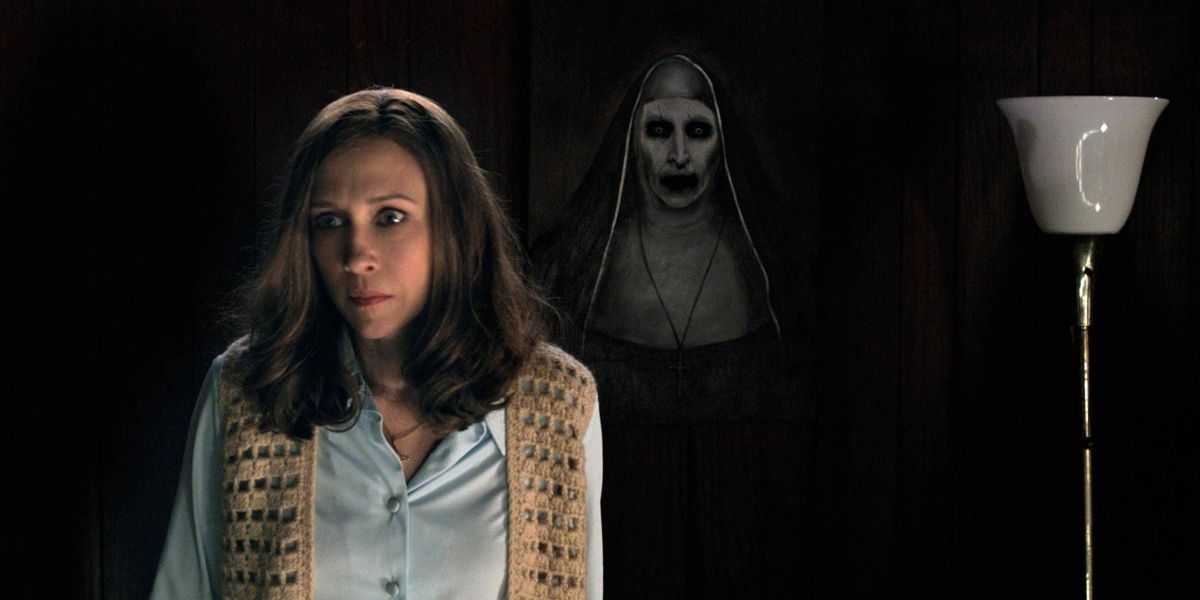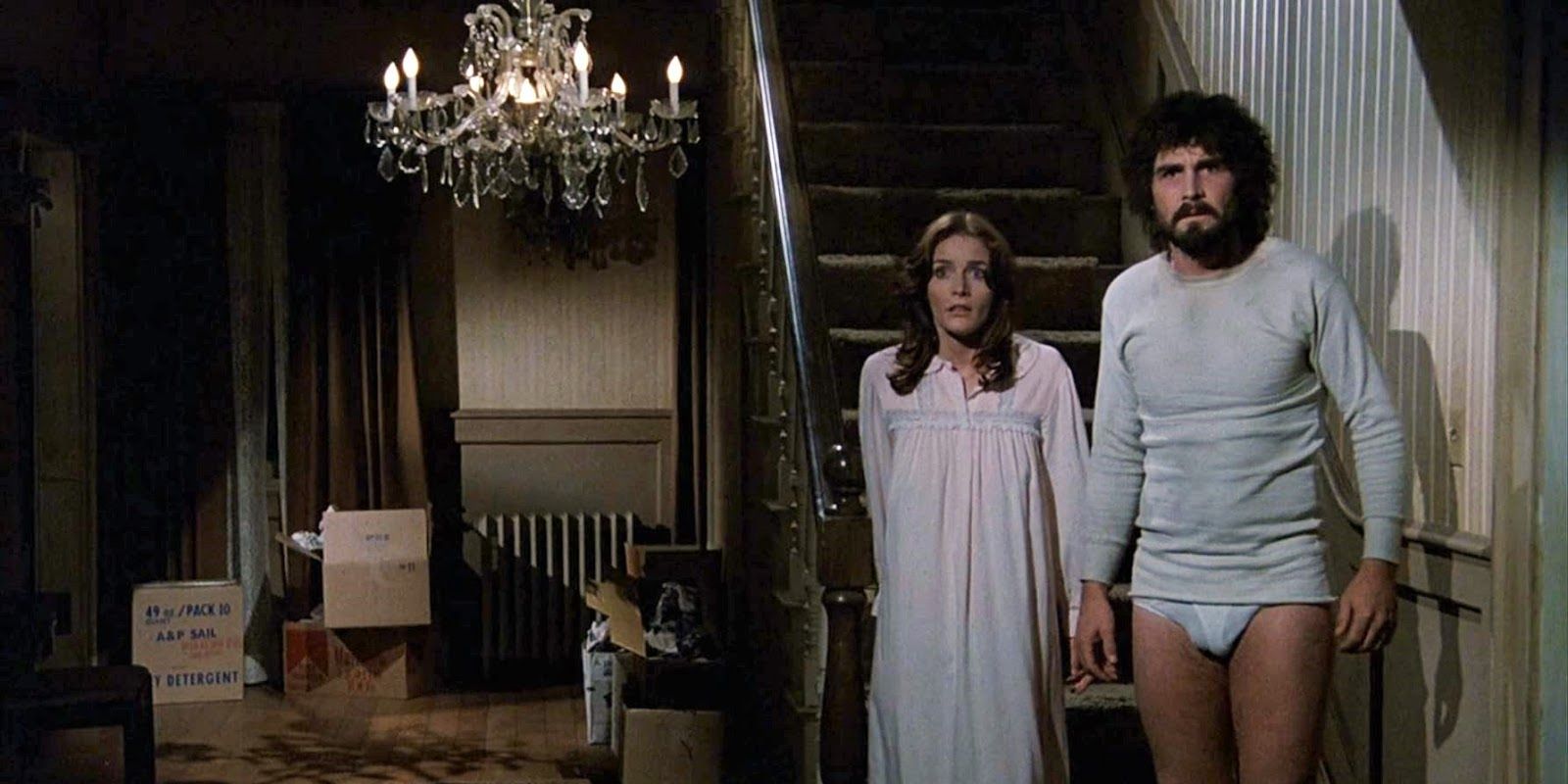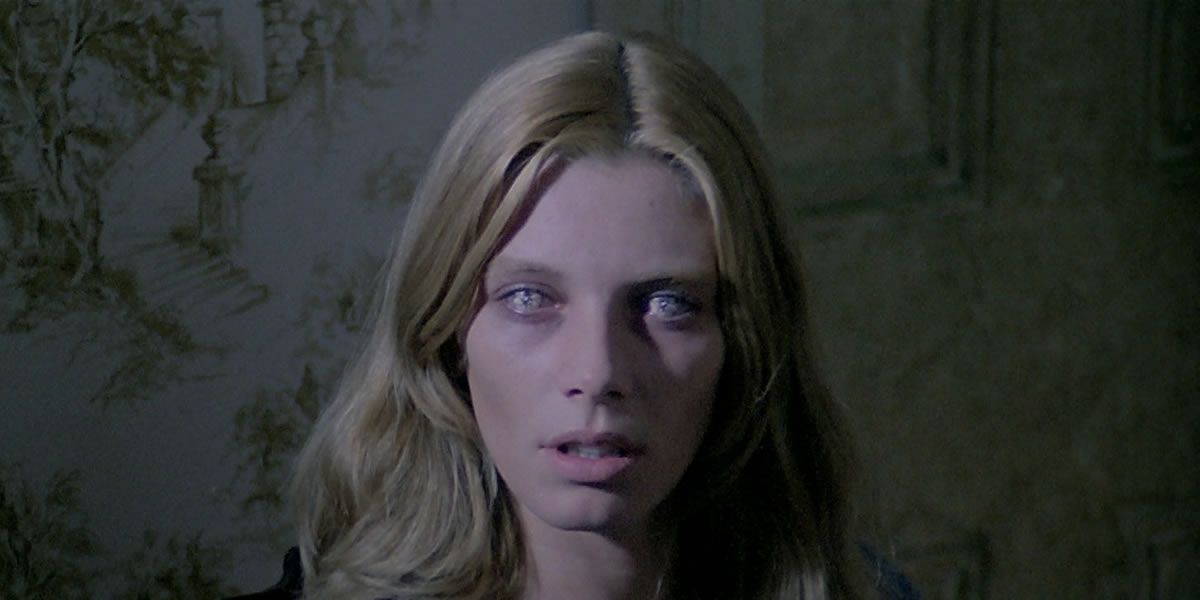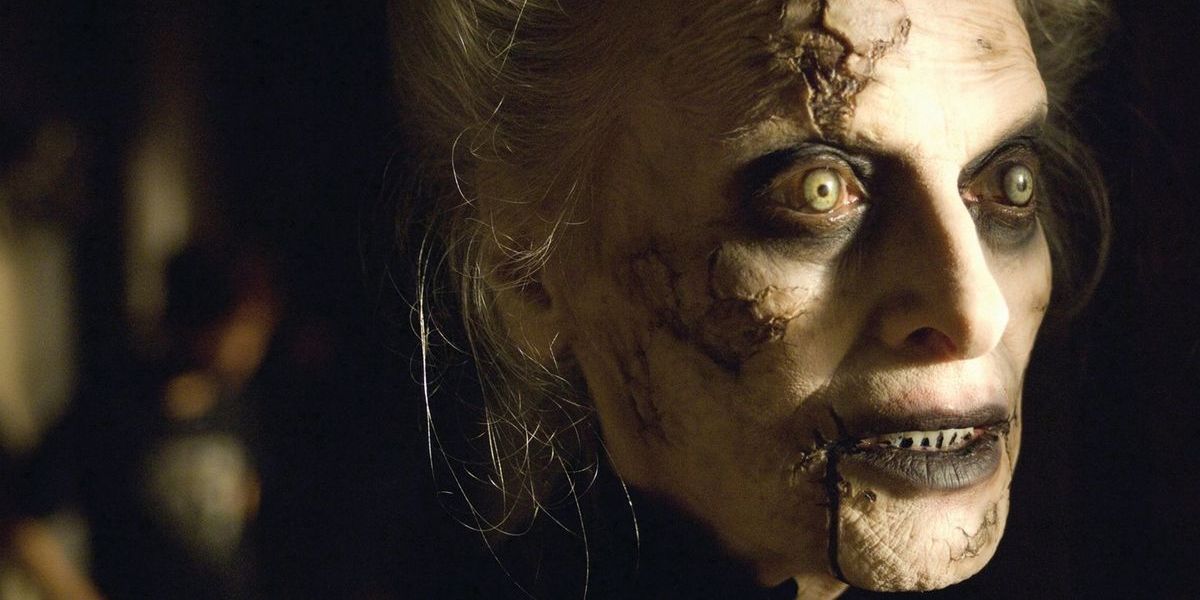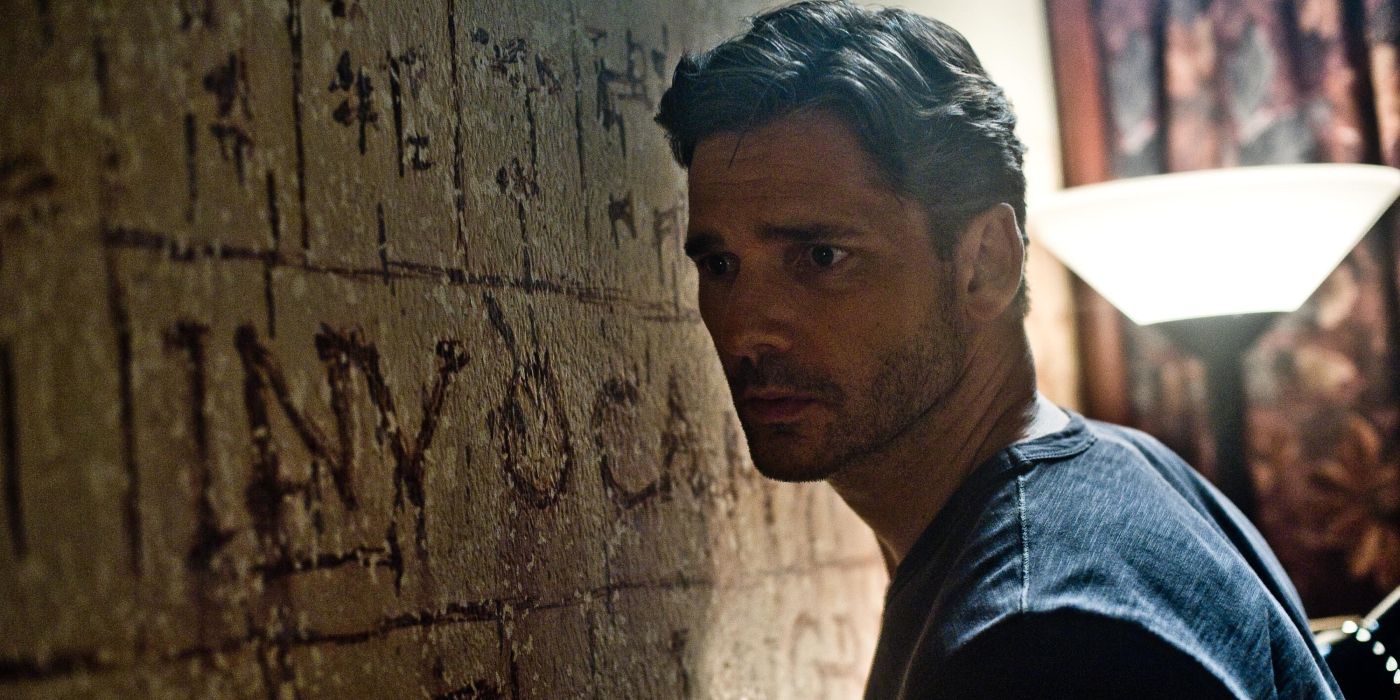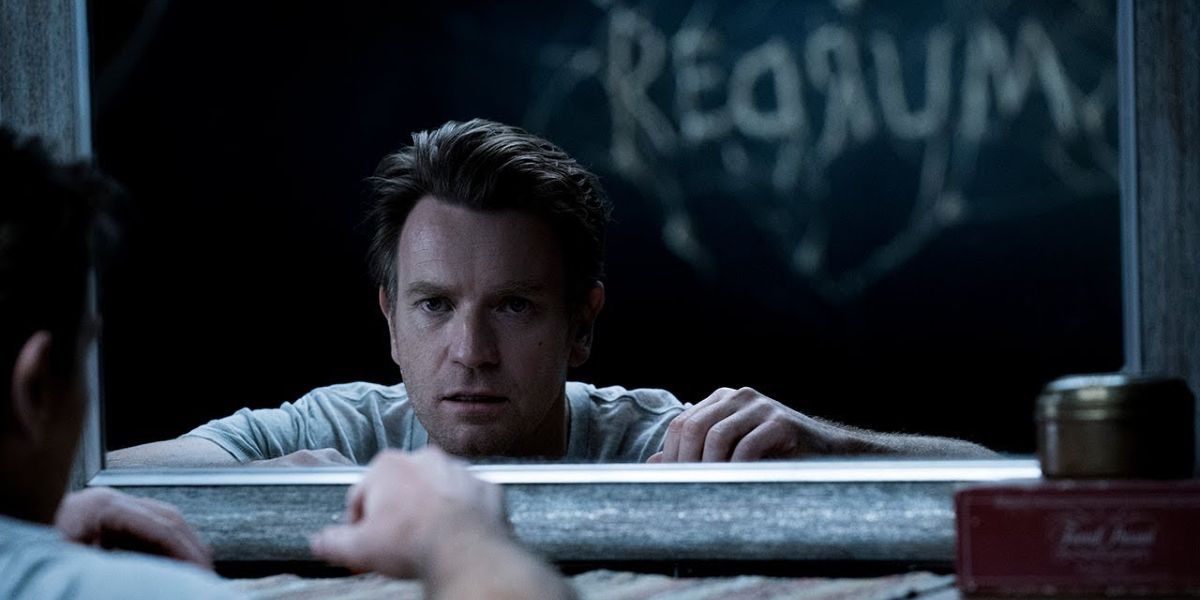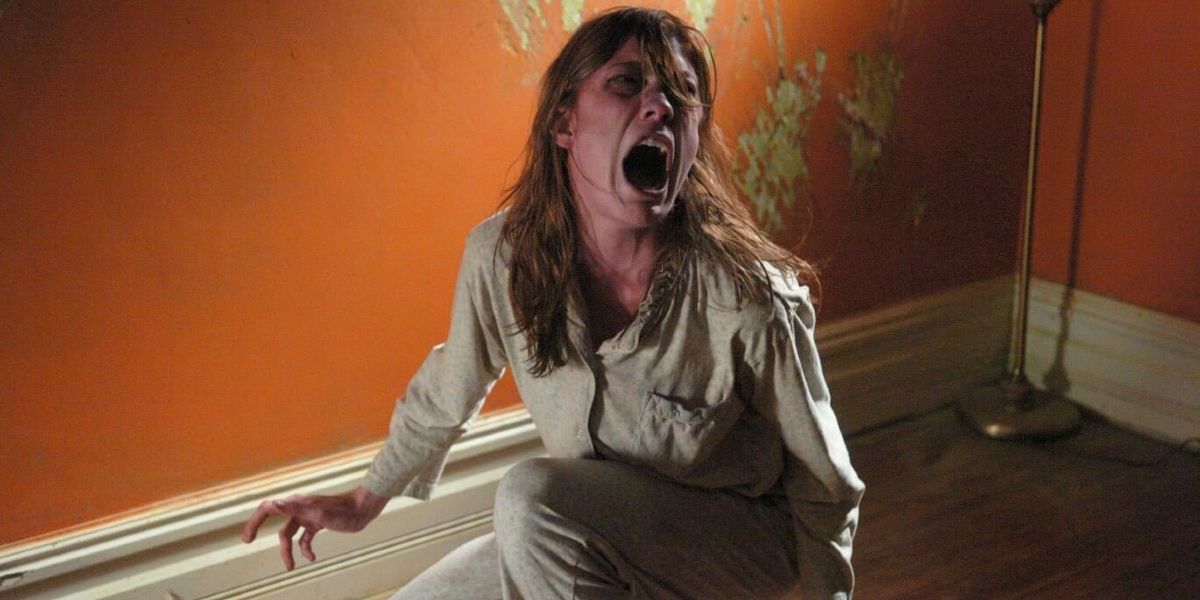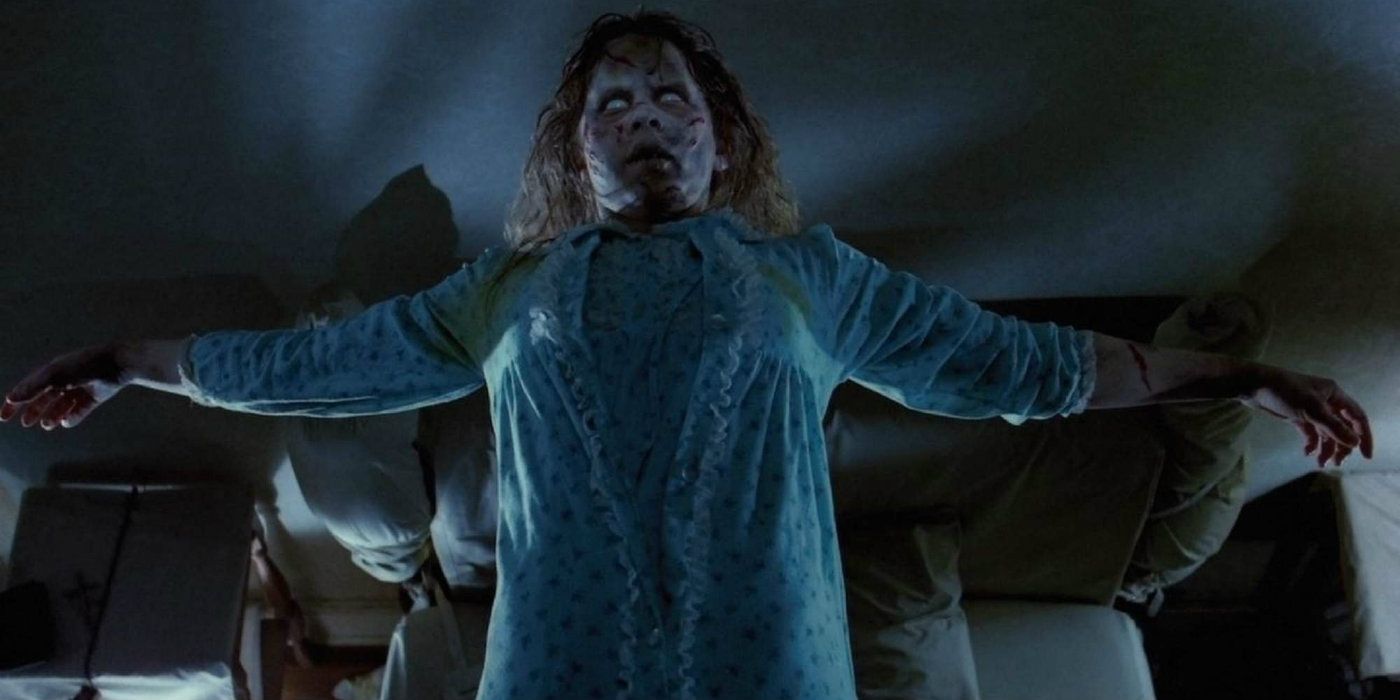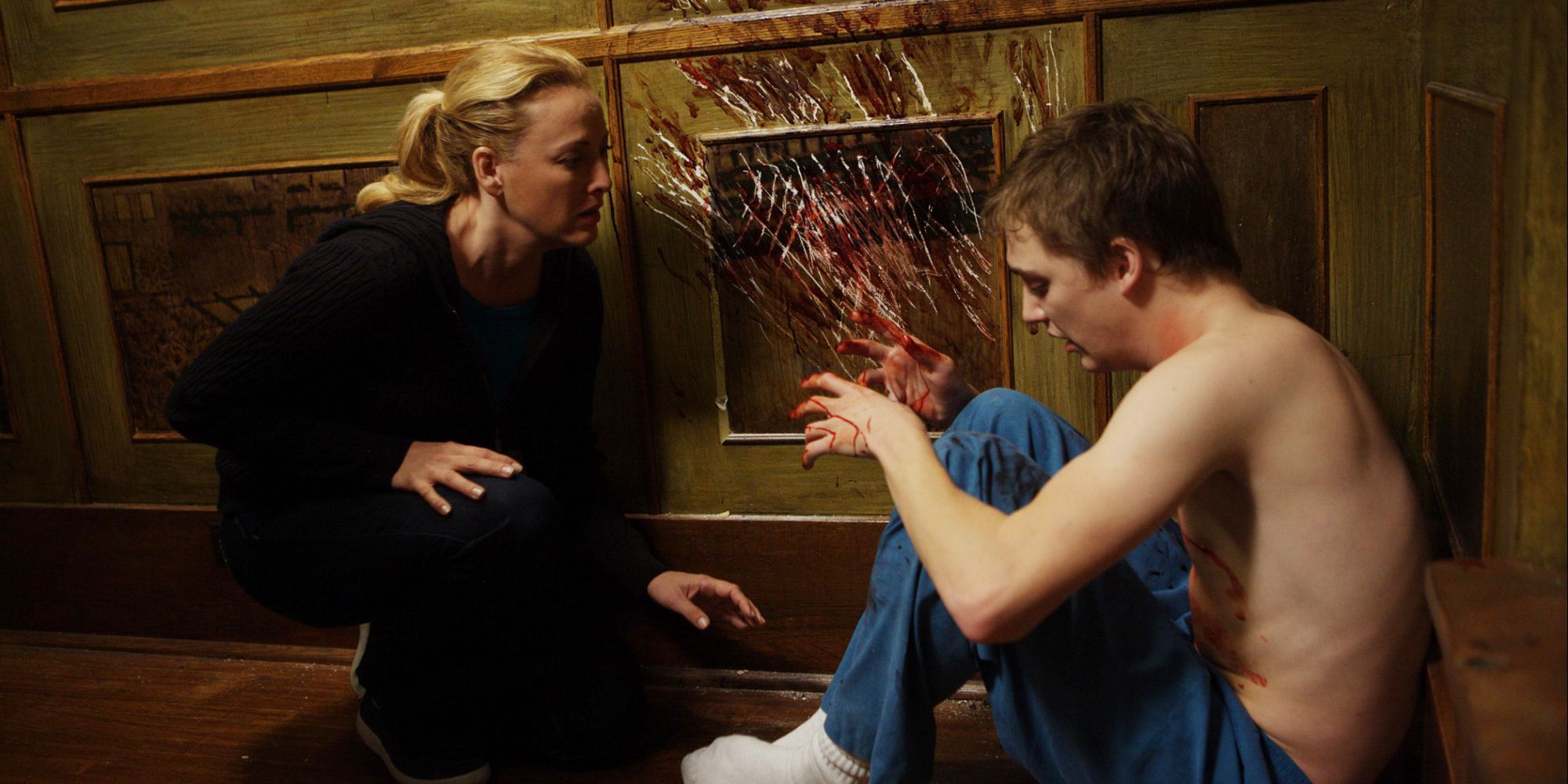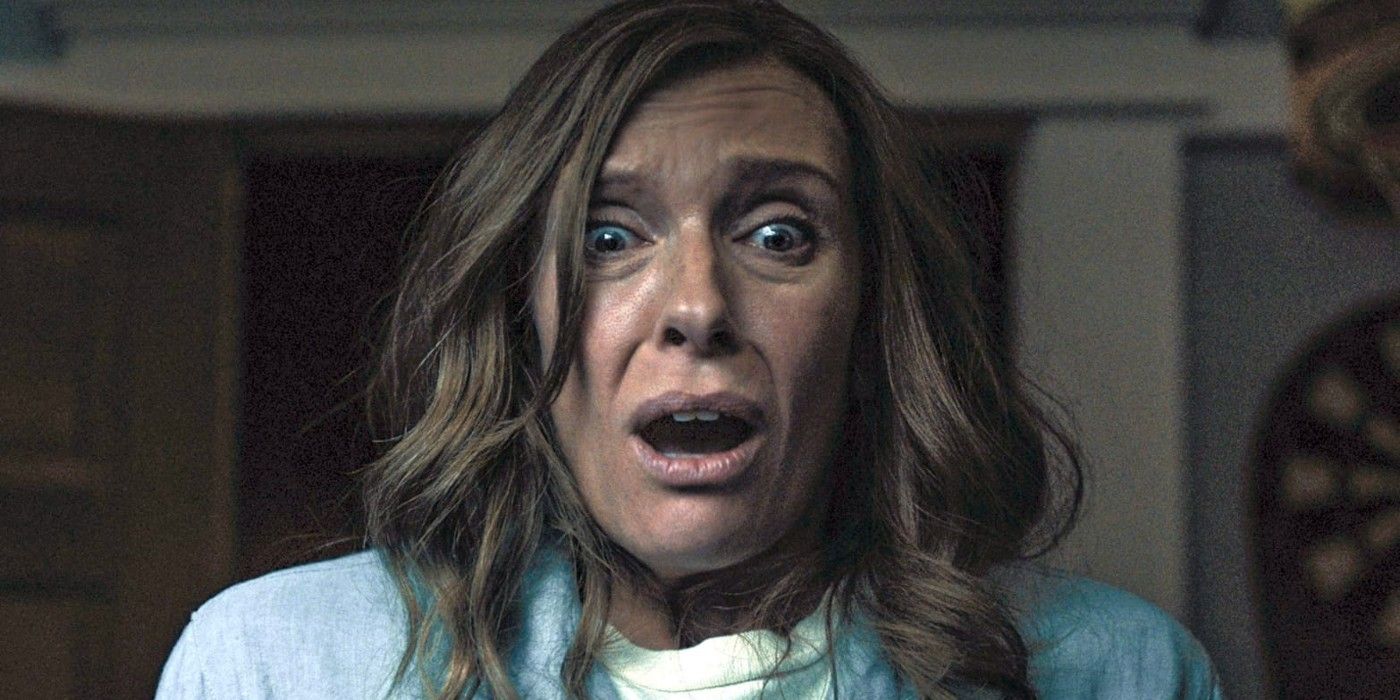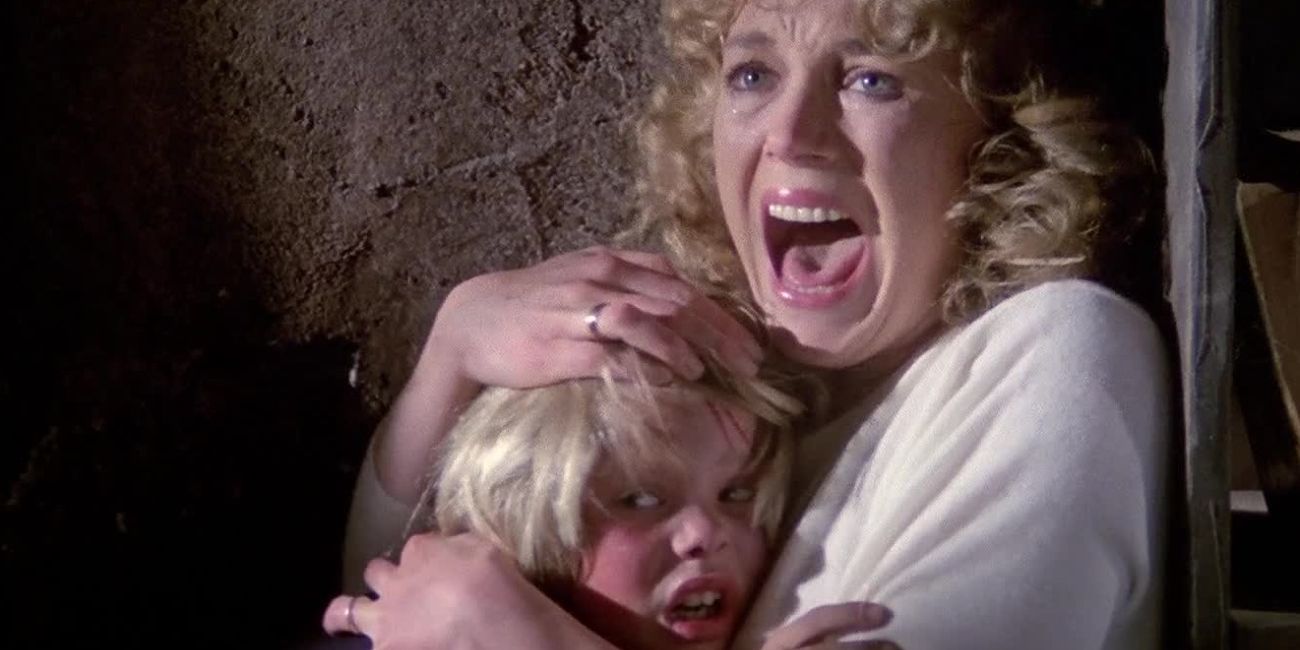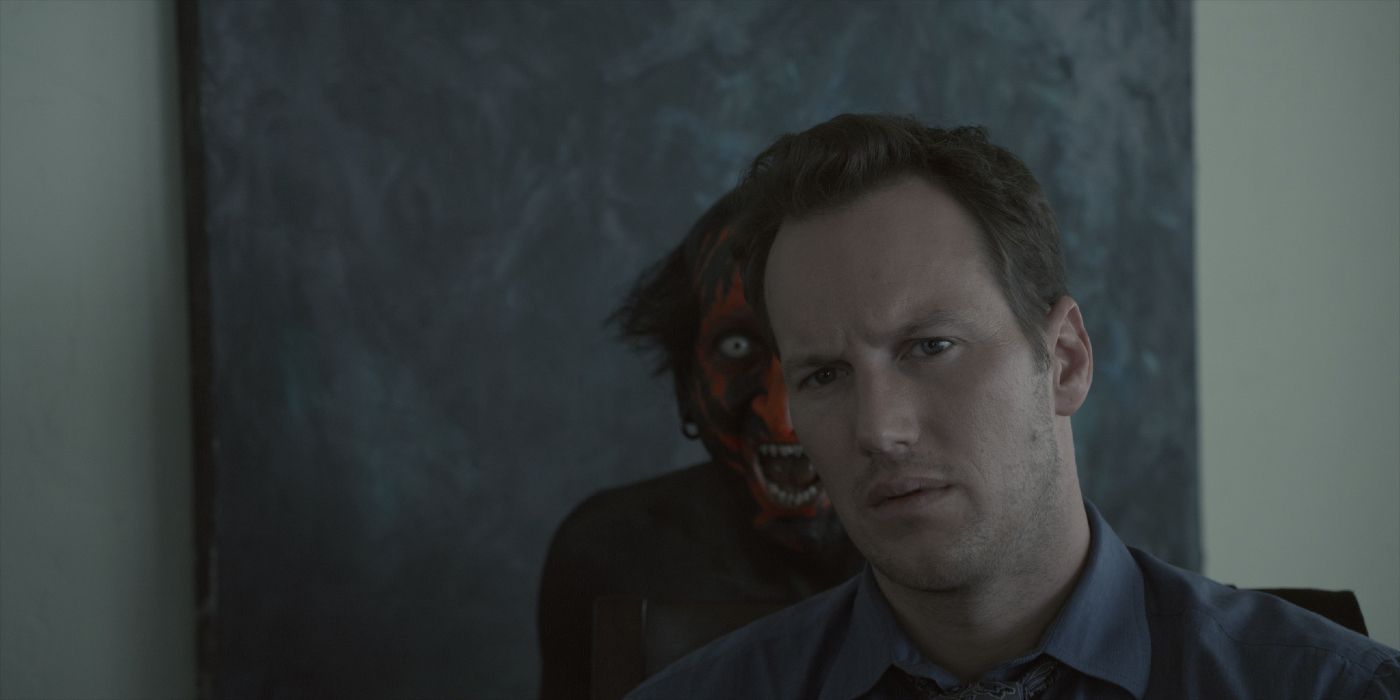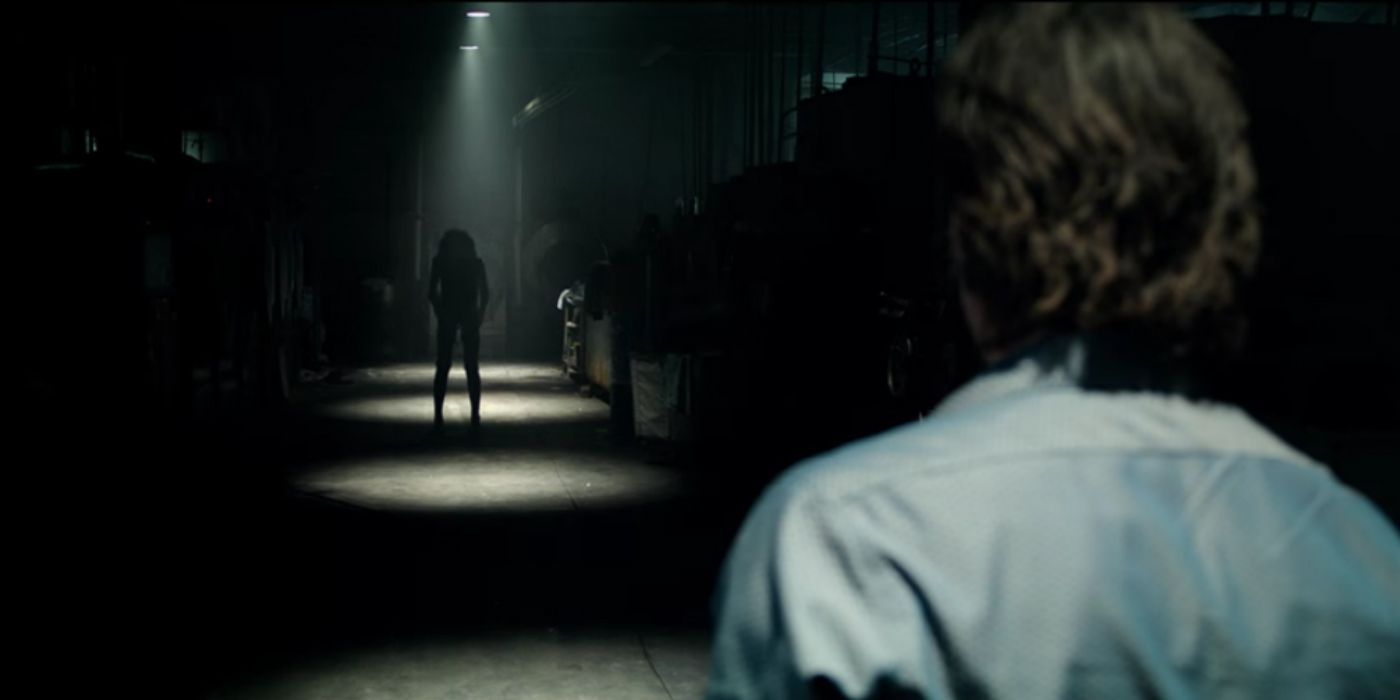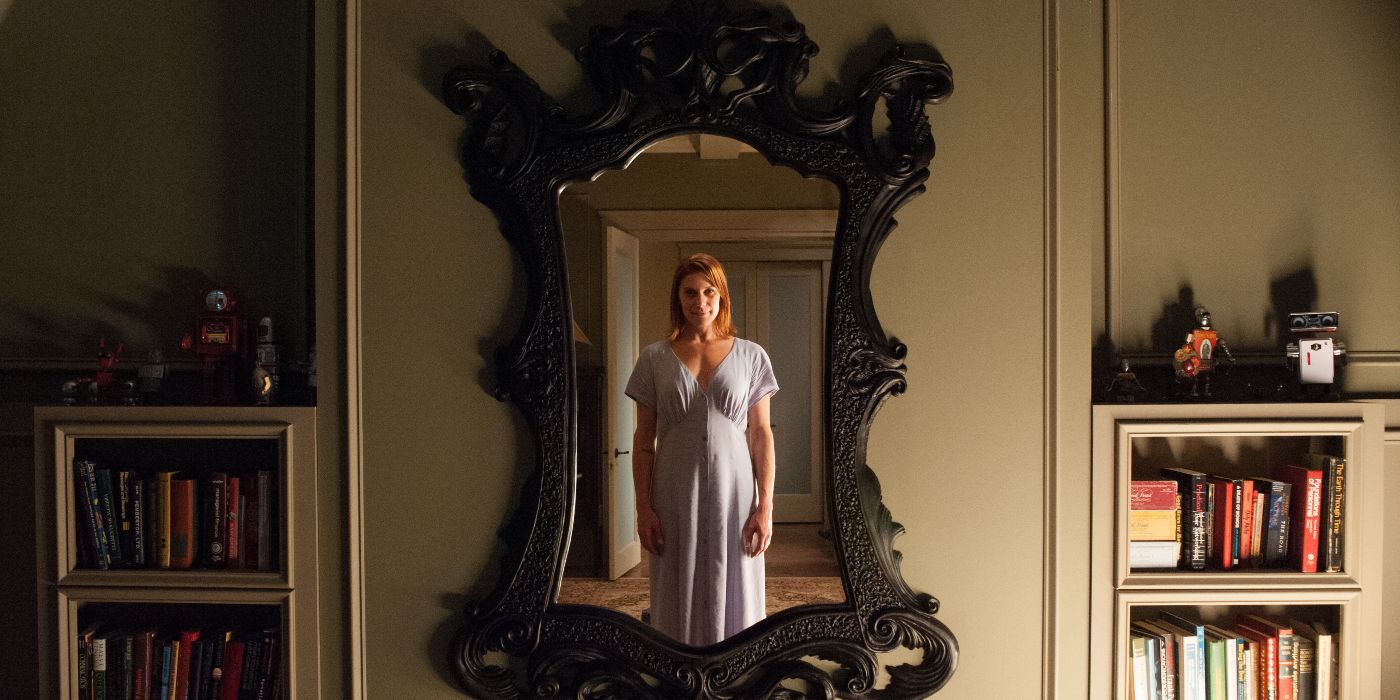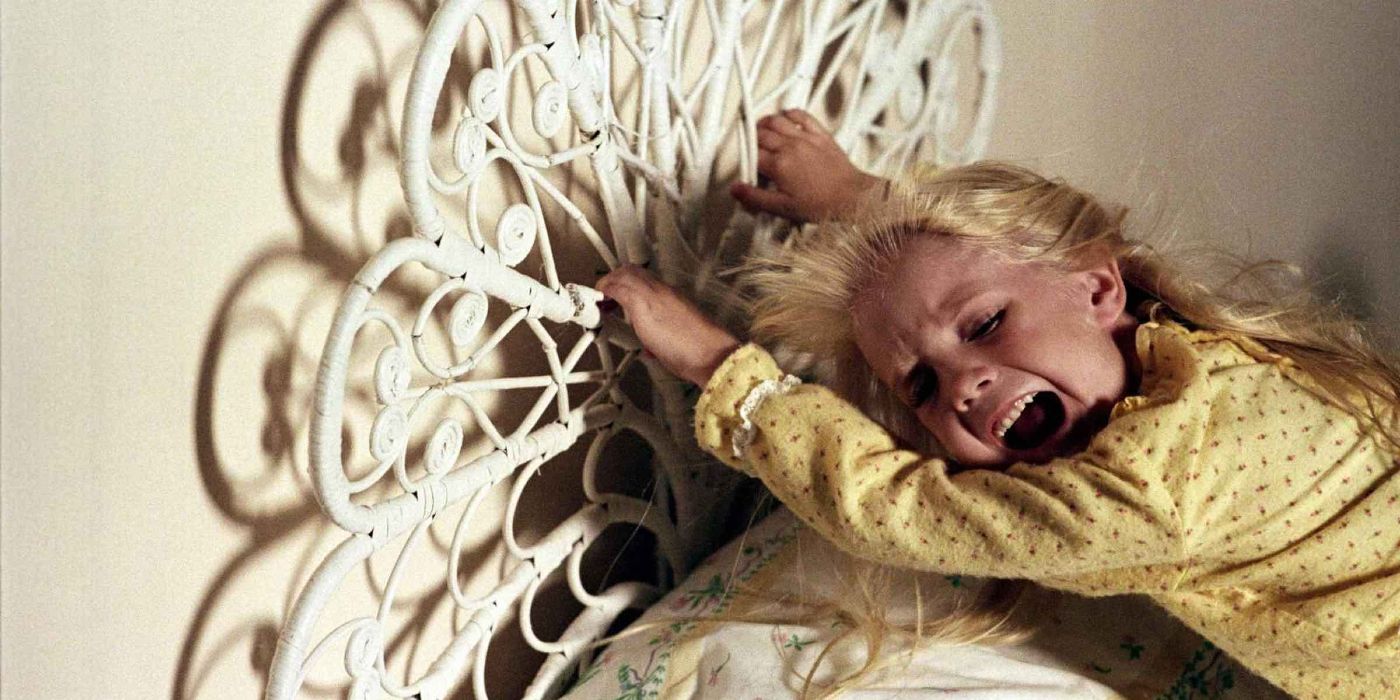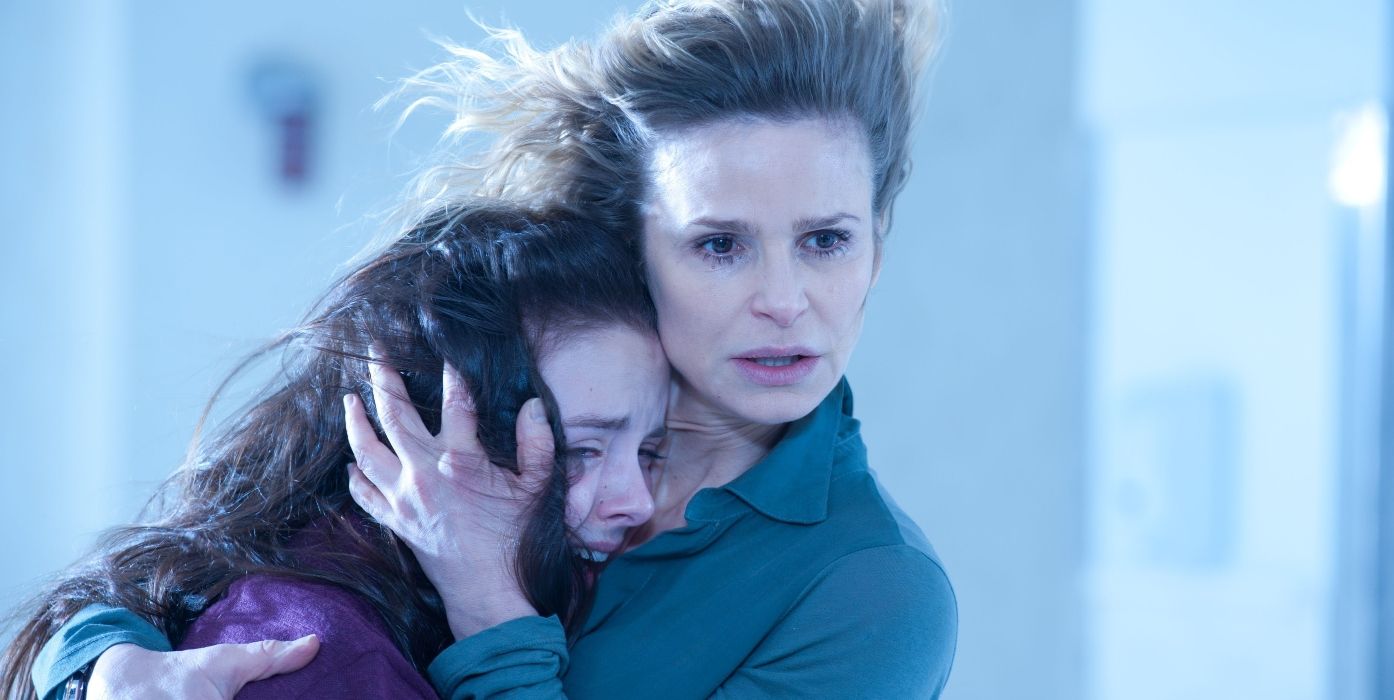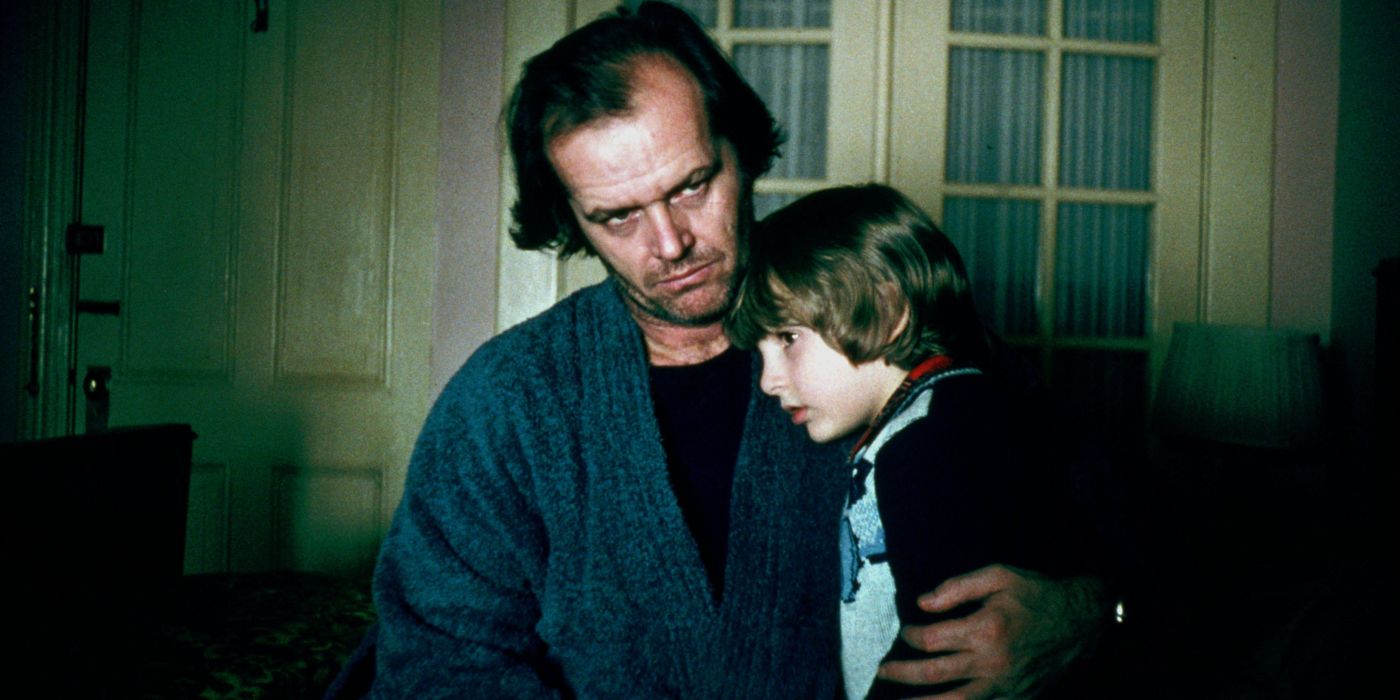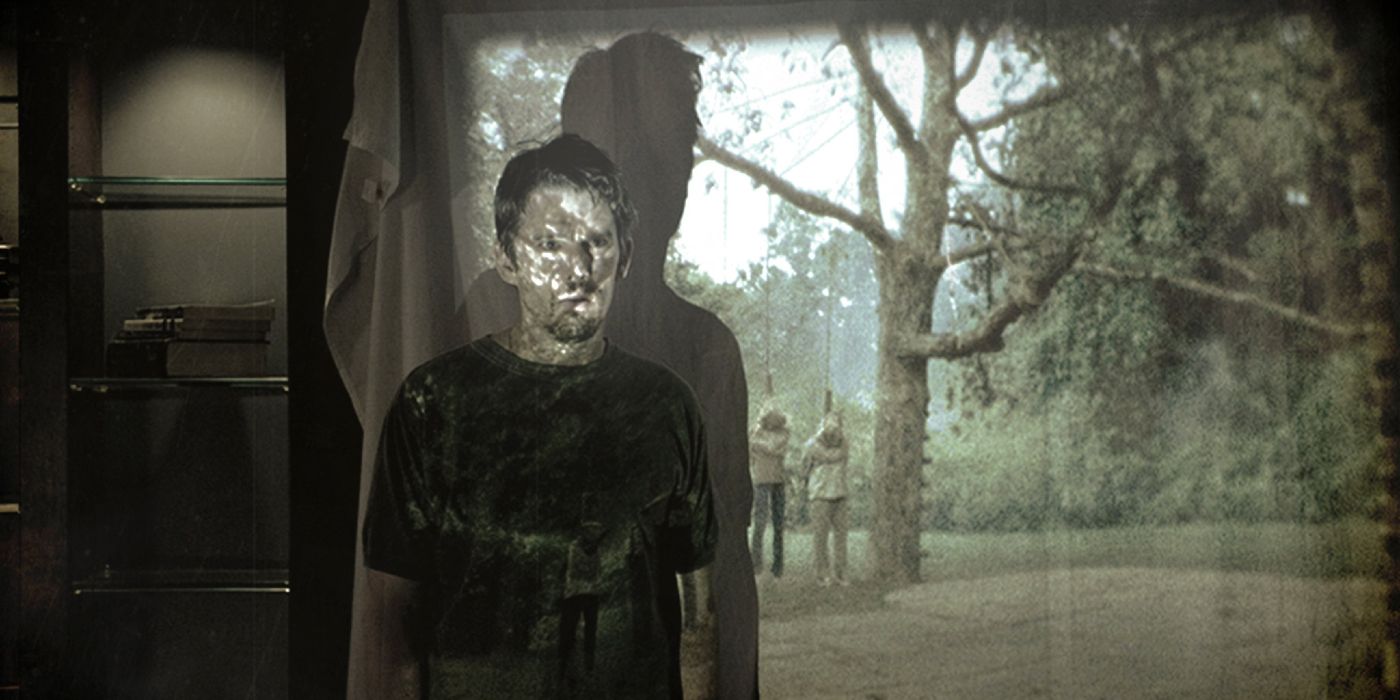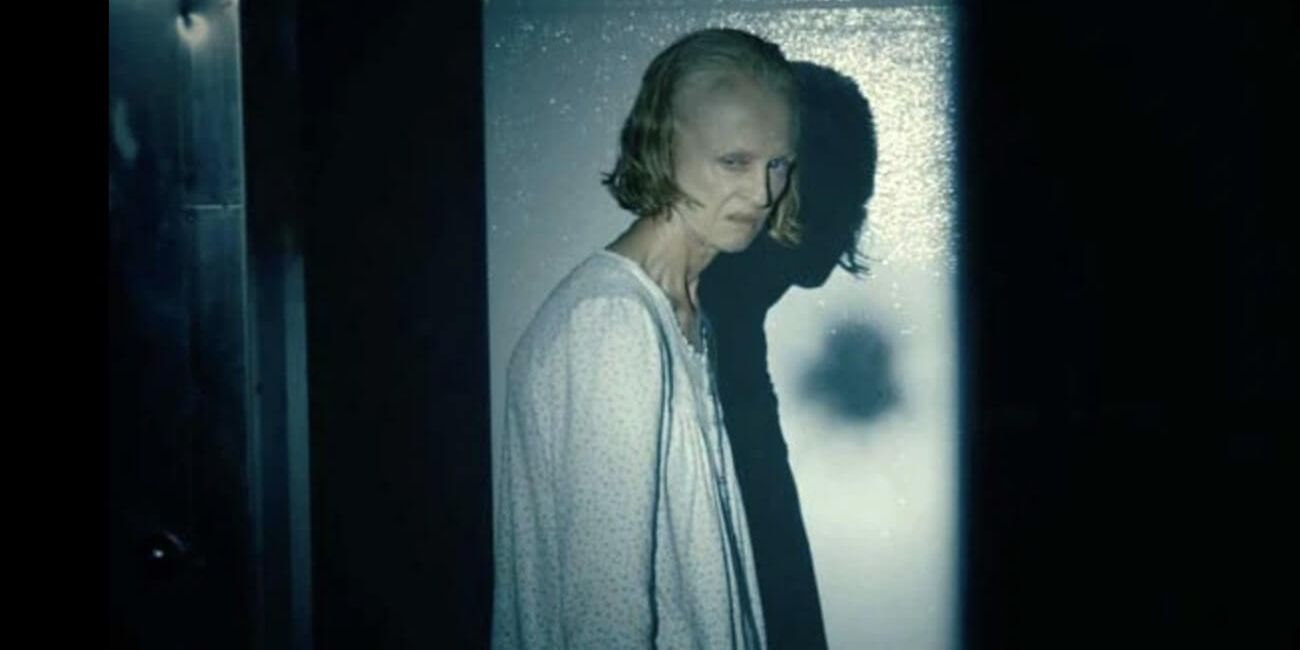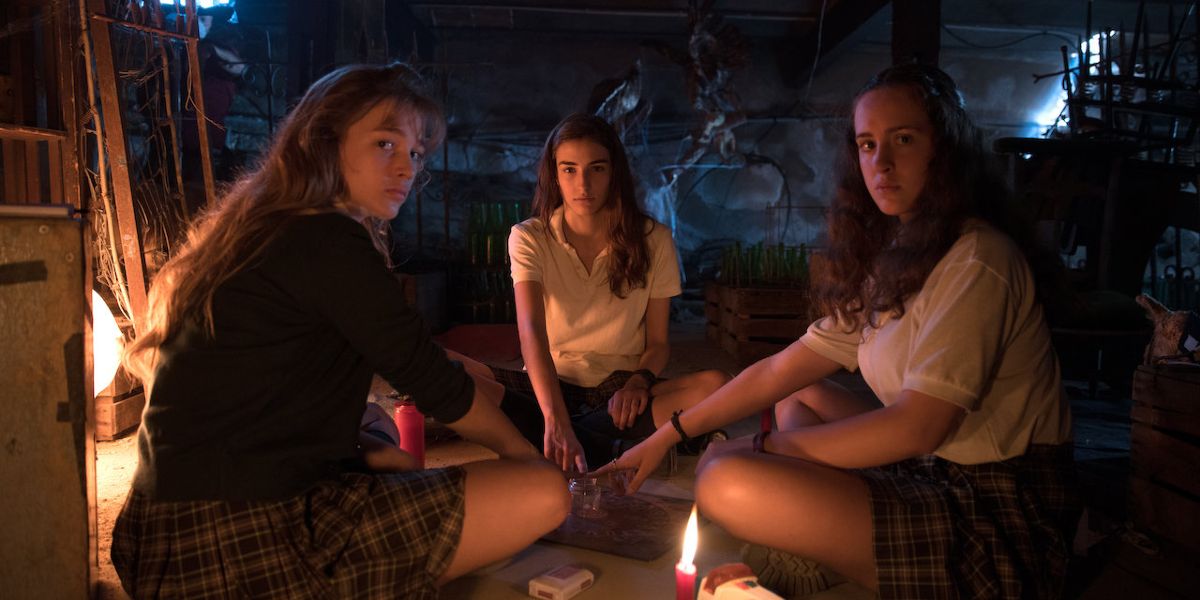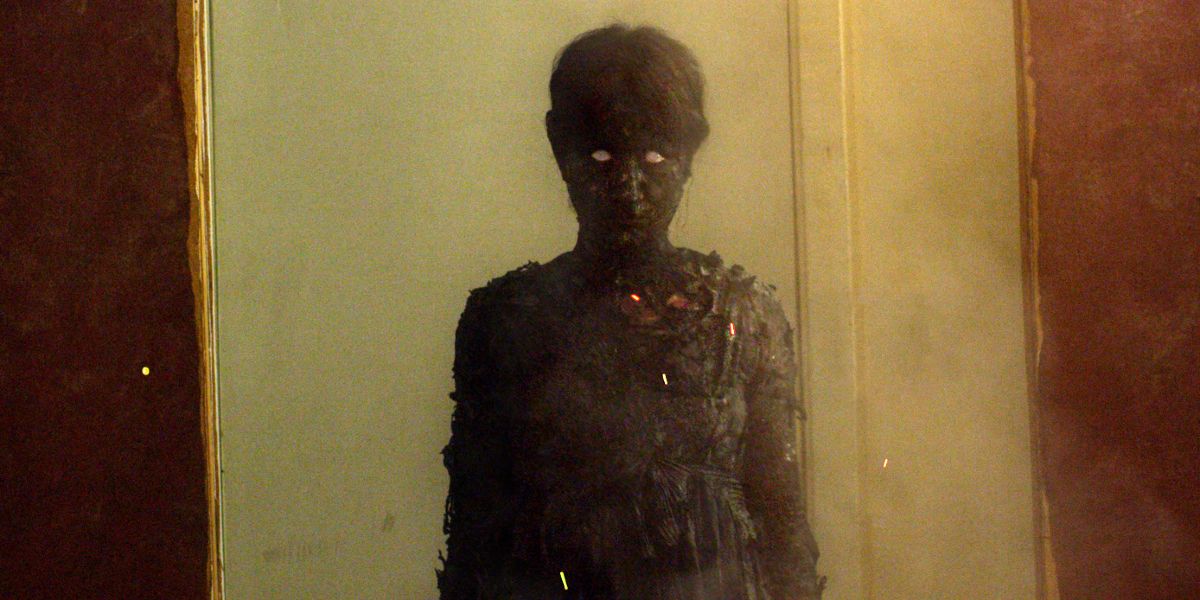The Conjuring might be James Wan’s most effective and flawlessly executed horror effort to date. It was released the same year as Wan’s sequel to Insidious, one of the scariest PG-13 horror movies ever made, and it upstaged the creepy, colorful, creative continuation with classic technique, hair-raising tension, and blood-chilling scares. The movie is straight-up terrifying. It was a throwback gem in an era of found-footage films, and Wan’s first R-rated release since Dead Silence in 2007, as well as his first horror movie without writing partner Leigh Whannell since his directorial debut in the year 2000.
Eight years later, The Conjuring has spawned three mainline entries, a spin-off trilogy, an origin story, a tangentially connected Hispanic folklore horror film, and still has several additional related films in development. They all share specific characters, concepts, and colors—except for The Nun—in common. Common throughlines are the haunted items, weaponized faith, and possessed people—tried and true supernatural horror structures that are extremely compelling when the artists behind the work can communicate clearly through the medium.
Here’s a look at a few movies that share some of the paranormal terror and technical prowess of the 2013 powerhouse. Some share strengths, some achieve tonal harmony, but all of these scary stories share elements of what made The Conjuring so great.
The Amityville Horror (1979)
The Amityville Horror is a 70s slow burn that feels very similar to The Conjuring. They’re so stylistically similar, it’s impossible to think it isn’t an influence for the modern horror goliath. There’s a visual and atmospheric overlap, helped in part by them sharing the same era, but where The Amityville Horror opts for restraint, The Conjuring opts for amplification. Amityville starts slower, no tone-setting Annabelle sequence, and builds slower, with a focus on how these unexplainable disturbances erode the sanity of the Lutz family. Like many horror classics, The Amityville Horror understands that less is often more and that the unknown is more terrifying than the quantifiable.
Of course, the real-life Ed and Lorraine Warren visited the Lutz’ home after they’d fled. This is set up in The Conjuring and briefly shown in the opening of The Conjuring 2. One could tuck a viewing of The Amityville Horror in between The Conjuring and The Conjuring 2, and The Conjuring Universe would only be sweeter and scarier for it.
The Beyond (1981)
The first entry of Lucio Fulci’s The Gates of Hell trilogy to grace the list, The Beyond is a wild, mystical, and downright brutal Giallo horror picture that shares more than just a time period with The Conjuring. The filming techniques, the color palette, and the swift pace offer up a myriad of scares and deaths in true Italian-horror fashion. While the film’s plot is messy, the general story is about a young woman, played by Catriona McColl, who inherits a haunted hotel in Louisiana. Misfortune and misery befall the workers fixing up the place until a blind psychic explains the dark history of the evil presence that is bringing death to the living. It’s an imperfect film, complete with laughable dubbing, and some bizarre editing, but it offers up something terrifying for all comers. Body horror, possession, bugs, spiders, jump scares, the undead, even crucifixion—The Beyond is relentless in its brutality. All that blood isn’t for nothing, as it successfully builds upon each fresh hell to an eruptive, surreal, and satisfying conclusion. An excellent score, gross practical effects, and a nonstop pace help preserve the timeless value of this Giallo classic.
Dead Silence
One of the less thematically connected pictures on this list, fans of James Wan will find Mary Shaw (Judith Roberts), and her spooky dolls, an early prototype for villainous entities featured in both the Insidious and The Conjuring franchises. This isn’t a haunted house tale, it’s a whole beat-down town plagued by mysterious murders. Jamie Ashen (Ryan Kwanten) is looking for his wife’s killer while he's being chased by Donnie Whalberg’s detective Lipton. Dead Silence is a product of its time, complete with an overpowering blue filter and editing reminiscent of the Saw franchise, which holds water because, lo-and-behold, James Wan started that franchise too. But the paranormal core of the story, the pale-faced killer ghost in black, and Wan’s style all demonstrate hints at what he and writer Leigh Whannell are capable of in the sub-genre.
Deliver Us From Evil
This movie, more than any other, uses the Christian faith like a white magic against the forces of darkness. The premise is that evil can infect people like a virus, capable of spreading from person to person and that the only treatment is a mystical application of faith. What follows is about as high production as horror gets, it is produced by Jerry Bruckheimer (Pirates of the Caribbean) after all. It’s rife with exorcisms, fight scenes, and plenty of exploding glass. The star-studded cast, effective jump scares, familial love story, and its depiction of faith are what tie it together with the other films on this list. It melds genres like Seven and plays with the based on a true story genre trope, like The Conjuring itself, but Deliver Us From Evil separates itself, for better or worse, by its ambition of what big-budget horror can be.
Doctor Sleep
At first glance, the psychic nature of Stephen King’s The Shining and Doctor Sleep seem pretty different from the demonic horror of The Conjuring’s haunted universe. But Doctor Sleep redefines a haunting from a spiritual to a psychic phenomenon. Through that lens, ghosts, possession, astral projection take on a fresh quality that feels removed from the ol’ “the power of Christ compels you,” chants used to dispel spiritual problems in movies since the 1970s. Doctor Sleep, the movie, follows Danny Torrence (played by Ewan McGregor), now a grown man, coping with addiction and recovering from his traumatic childhood. He’s been confronting and psychically confining entities he’s encountered through his life, but he begins to suspect a new friend is the subject of a more terrestrial threat. The story is a marriage source materials, a sequel to both Stephen King’s and Stanely Kubrick’s separate interpretations of The Shining, as well as a heavily adapted version of King's sequel book Doctor Sleep. It’s very man vs. man, like The Conjuring: The Devil Made Me Do It, but the rotting ghouls, final confrontation, and paranormal nature of the story make this a companion story to the supernatural horror world of The Conjuring.
The Exorcism of Emily Rose
Another film on the list of all-time PG-13 horror greats, The Exorcism of Emily Rose captures the promise of the courtroom drama premise The Conjuring: The Devil Made Me Do It introduced but never devoted enough screentime to fulfill the promise. The second of three Scott Derrickson pictures on the list, and his second feature film, The Exorcism of Emily Rose is about exactly what the title says. Jennifer Carpenter’s (Dexter) performance as Emily Rose - a young woman slowly taken over by a paranormal entity - is unreal. Father Moore (Tom Wilkinson) is called to aid in her exorcism, and the courtroom drama surrounds the grim events that followed, wherein faith and belief become a core factor in whether you consider him innocent or guilty. This movie, like the next film on the list, sticks with you in part thanks to startling imagery (like Emily eating spiders or contorted under a bed,) but mostly thanks to Carpenter’s tremendous performance. As far as movies about possession go, The Exorcism of Emily Rose falls only behind William Friedkin’s The Exorcist in terms of true terror.
The Exorcist
The Exorcist is one of the most renowned horror films ever. It’s known and feared by audiences of every generation due to its disturbing depiction of the possession and subsequent exorcism of a young woman named Reagan MacNeil (Linda Blair). This movie, along with The Amityville Horror and The Beyond, is likely a key influence in Wan’s development of The Conjuring, but its influence is much farther reaching throughout the genre overall, and it fundamentally changed the cinematic language of how we make exorcism movies. Even after decades of mimicry and horror's reliance on the tropes that The Exorcist helped create, even after CGI became so impressive, there’s a timeless, terrifying, uncomfortable nature to this picture, its production, and its performances. The release of a director’s cut in 2000 added more to fear but whether it’s the theatrical release or the director’s cut, this is a must-see film for horror fans. The iconic music, lighting, and makeup are still revered and parodied almost 50 years later. It’s a downright incredible film, irrespective of genre, but not everyone can handle the visual severity and emotional intensity of The Exorcist. However, if you're a fan of The Conjuring and you've never seen it, it's an absolute must-watch.
The Haunting in Connecticut
The Haunting in Connecticut is a contemporary love letter to vintage Italian horror, complete with Suspiria shoutouts, mystery, and maggots. Modern filming techniques and editing give the film an updated look and feel, but the foundation of this film is built on classic Italian horror concepts. Told in flashback, the Campbells move into a new house close to a radiation treatment center because their son is enrolled in an experimental therapy there. Virginia Madsen and Kyle Gallner are the heart of the familial story as a compelling mother-son duo navigating the murky emotional waters of mortality. The mystery surrounding the events that birthed the evil in The Haunting in Connecticut is compelling and disturbing, though the "why" of it all goes somewhat unanswered, but fans of The Conjuring will find more than one parallel between the two pictures to enjoy.
Hereditary
This is a movie about a family. It’s a movie about a cult. It’s about loss, trauma, and expectations that has become infamous for its performances and explosive finale. Ari Aster burst onto the mainstream horror scene with A24’s release of Hereditary in 2018. Toni Collette’s inspired performance as the grieving mother of a family beset by death will go down as one of the all-time great horror performances ever, one that absolutely should have earned her an Oscar nomination to go with her instant horror-legend status. Hereditary bends sub-genres a bit, not conforming to the traditional formulas and structures played up in many of The Conjuring-verse’s movies, tying supernatural and cult horror movie themes together into a disturbing horror movie. Patterns, clues, and iconography littered throughout the picture create excellent “ah-ha,” moments upon rewatches thanks to clever planning and execution from the writer and director, Ari Aster, but even if you know how it all ties together, Hereditary never loses its searing impact.
The House by the Cemetery
The second, and last, The Gates of Hell project to share a table with The Conjuring is The House by the Cemetery. This is a grimy, messy, classic Italian horror picture by horror maestro Lucio Fulci. The cinematography techniques, color, and time period feel at home in The Conjuring universe, but like The Beyond, The House by the Cemetery dials up the violence, blood, and gross factor to 11. Maggots, worms, blood, and puss decorate each death while the people in the film seem helpless and clueless as to who is doing it, and how to stop it. Even less coherent than The Beyond, but less fantastical, The House by the Cemetery is closer to a slasher picture, but the tone and visual styling leave it comfortably in the wheelhouse of fans of The Conjuring.
Insidious
Blumhouse’s PG-13 horror franchise giant Insidious illuminated the big screen three years before The Conjuring. It was Wan’s return to horror with his writing partner and Saw co-creator Leigh Whannell after Death Sentence and his first collaboration with The Conjuring and Aquaman star Patrick Wilson. Insidious follows the Lambert family after they move into a new home and begin receiving unpredictable and terrifying visits from the dead—gasp. They move again hoping to outrun their woes, only to find their troubles followed them to their new-new home. That's when they decide they need professional help, leading them to a team of paranormal investigators - Lin Shaye's franchise-stealer Elise Rainer and her team, played by Whannell and Angus Sampson - to help combat whatever forces are plaguing their family.
Insidious doesn’t shy away from colorful lighting or jump-scares. While visually distinct, it operates under the same formula of The Conjuring—plenty of scares, paranormal investigators, psychic mediums, and a strong central familial love story, to name a few. The Conjuring 2 specifically feels at home in the Insidious universe thanks to a cooler color scheme, the cramped quarters, and scenes of psychic or astral projection, all of which cross over into Insidious territory, but both franchises are stronger for their thematic bleeding. And, like The Conjuring, Insidious spawned a long-running franchise, with Patrick Wilson himself set to direct the next installment.
Lights Out
Fans of jump scares, mystery, and horror in general, have a lot to look forward to in Lights Out. David F. Sandberg’s (Annabelle: Creation) theatrical debut is more contemporary in presentation than The Conjuring, but packs a similar scare factor in its creative use of tried-and-true horror techniques. The concept of a predator that literally lives in the shadows is all the setup necessary for the film. Where this movie separates itself is that there are no experts to call for their paranormal emergency. No Ed and Lorraine Warren with flashlights to keep the shadow assailant away. The tormented family must become their own experts, and solve their own mystery. A thin story is padded out by the relationships and thematic elements that give heart to this darkness.
Oculus
Oculus is without a doubt WWE Productions’ best film. Yes, World Wrestling Entertainment helped produce Mike Flanagan’s cursed object opus (along with Blumhouse and several other companies) before he made Gerald’s Game, The Haunting of Hill House, and The Haunting of Bly Manor for Netflix. At its core, Oculus is a story about a family terrorized by an incomprehensible and powerful evil emanating out of an antique mirror. The story plays out across two timelines that share the same location, passing the baton back and forth between past and present attempts to confront the cursed glass. Instead of watching expert demonologists confront demons, the audience watches two children who grew up traumatized by their experiences among evil as they attempt to engage it once more--this time as adults with all the knowledge of their past experiences. Its pace rivals any movie on this list, terrifying and tragic from the beginning.
Poltergeist (1982)
Tobe Hooper (The Texas Chain Saw Massacre) and Steven Spielberg’s definitive haunted house story is a timeless tale rife with tension and humor. It’s the only PG horror movie on this list, and one of the few that’ll spook and thrill people of all ages. Another clear inspiration for The Conjuring franchise, spirits invade the home of a suburban family who subsequently contacts a psychic investigator for help. Craig T. Nelson (The Incredibles) and JoBeth Williams (Kramer vs. Kramer) play the charming parents whose love for each other and their family operate as the emotional crux of this film. The endearing Zelda Rubinstein assumes and births the larger-than-life role of Tangina, the medium who comes to aid the Freeling family, whispering exposition through her iconic soft, raspy voice. What separates Poltergeist from The Conjuring is Poltergeist’s lack of weaponized religiosity. There are no chanting priests, no crosses pressed to people’s heads, but that’s not to say the movie is trope-free. Cliches or not, Poltergeist stands the test of time because it’s a heartfelt, humorous, and horrifying story.
The Possession (2012)
The Possession, not to be confused with Andrzej Zulawski’s inimitable Possession, is another “based on a true story” tale about a family who comes into possession of a box used as a conduit by a dybbuk, an entity in Jewish folklore that inhabits human hosts. The movie offers a few unique scares alongside strong performances from Jeffrey Dean Morgan (The Walking Dead), Kyra Sedgwick (The Closer), and the young Natasha Calis draw the viewer in as the torments accelerate around this fractured family. It’s among the more visually dark films on the list, with a dedication to black, grey, and every shade in between that separates itself from The Conjuring’s washed out, whites, browns, and reds. The Jewish folklore angle creates the opportunity for Matisyahu, the Hebrew musician, to appear as a young rabbi and exorcist. It’s somewhat refreshing to see a spiritual horror story not grounded in Christianity, not governed by the power of Christ, but ultimately the power of faith acts as the same white magic used to dispel the forces of evil.
The Shining
Stanley Kubrick’s The Shining is an obvious inspiration in its use of color, its cinematography, and the nightmarish spirits that haunt the Torrence family during their stay at the overlook hotel. It doesn’t offer scares at the break-neck pace of most modern haunted house horror stories, but the slow build of tension up to the chaotic conclusion is a masterclass in directing within the genre. The nuance of the characterization through dialogue, the use of color to create a mood, and the ominous music create a tone and tension that is unique to The Shining, helping preserve its place among classic horror movies. Jack Nicholson’s portrayal of a man whose soul is being eroded alongside Shelly Duvall’s portrayal of a woman losing her mind creates a hectic dynamic that is almost the antithesis of the thematic love so ingrained in The Conjuring. The movie succeeds even without Stephen King’s blessing, as he famously dislikes this iteration, opting to create his own made for tv miniseries based on his novel, The Shining.
Sinister
Sinister was recently scientifically asserted as the scariest movie of all time in a study conducted by the group boadbandchoices. It literally got more people’s hearts pumping faster, on average, than any of the top 50 best-rated horror movies according to websites like imdb.com, rottentomatoes.com, and Reddit. The third and final Scott Derrickson film on this list, Sinister follows a true-crime writer and his family after they move into the house where a family was murdered. Writer Ellison Oswalt (Ethan Hawk) hopes to retrieve his perceived lost fame by uncovering the mystery behind the grisly murders that took place in his house in his new book. The cast is kept small—even with the inclusion of the charming deputy so-and-so played by James Ransone—and the unsettling imagery is constant in this frightening story that isn’t about ghosts or demons, but about the boogeyman himself—no, not John Wick. The movie feels miserable, especially in contrast with the warmth and love that exists within the bones of The Conjuring universe, but its dedication to jump scares and unique application of the supernatural make Sinister one of the most disturbing and enticing horror movies of the 21st century.
The Taking of Deborah Logan
A found-footage darling among a sea of shaky-cam spectacles, The Taking of Deborah Logan is as scary as it is sad. The film plays as a mockumentary meant to be documenting an older woman’s struggle with the onset of Alzheimer’s disease. As Deborah, played hauntingly well by Jill Larson, goes from forgetful to frightening, the documentary crew and Deborah’s daughter Sarah (Anne Ramsay) start to fear for their safety. Deborah’s transformation over the months that the film takes place is strengthened by an out-of-this-world performance from Larson. Her name deserves to join the conversation around classic horror performances alongside Toni Collette, Linda Blair, Jack Nicholson, Shelley Duvall, Jamie Lee Curtis, and more.
The POV and security camera style shooting is a far cry from The Conjuring’s static shots and slow zooms, but the colors, lighting, and themes keep the two as simpatico. Frantic camera work is the Achilles heel of this subgenre of films, but like Troll Hunter, these cameras are being operated by a “real” documentary crew, so it’s slightly more cinematic, but it still suffers from the limitations of the subgenre.
Veronica (2017)
This Spanish supernatural scary movie follows the titular young woman’s confrontation with a spirit after she and two friends experiment with an Ouija board during a lunar eclipse. Without Ed or Lorraine Warren to save her, Veronica (Sandra Escacena) must find her own way to save her family from the torment of this enigmatic spirit. Veronica is visually distinct with a dedication to unique light sources on-screen, like children’s toys, flashlights, and candles. Those moments of creativity stand in contrast to the washed-out blue nighttime sequences, of which there are many, in the film. The movie is carried by the performances of four child actors, as well as a memorable sequence or two with Sister Death (Consuelo Trujillo), a nun who blinded herself to avoid seeing the horrors of the spirit realm around her. Since it’s a story that starts at the end, a little tension is lost along the way, but it still builds to an unnerving climax made all the more chilling by the “based on a true story” premise from a police report in 1991.
We Are Still Here (2015)
We Are Still Here is a movie that can rival The Conjuring in terms of chaotic final acts—It’s melodramatic, it’s spooky, and it’s bloody bonkers. Starring the legendary Barbara Crampton (Re-Animator), the story follows a family after their move into a new house in a small town. They invite their friends over to conduct a seance and they awaken the evil that’s been buried there for more than a century. This movie more than any 21st-century horror movie, other than The Conjuring itself, feels like it’s paying homage to the haunted house films of decades past. Where it diverges is in its completely off-the-wall finale that plays like a montage of mayhem. The campy atmosphere, the 70s setting, the classic film techniques create a vintage feel to this explosive new wave haunted house tale.

